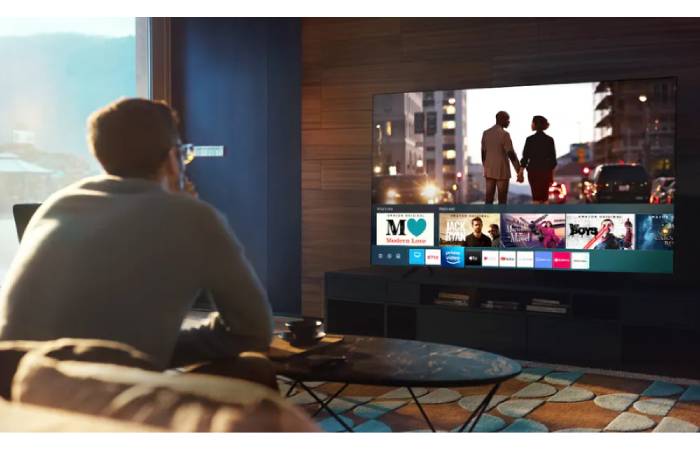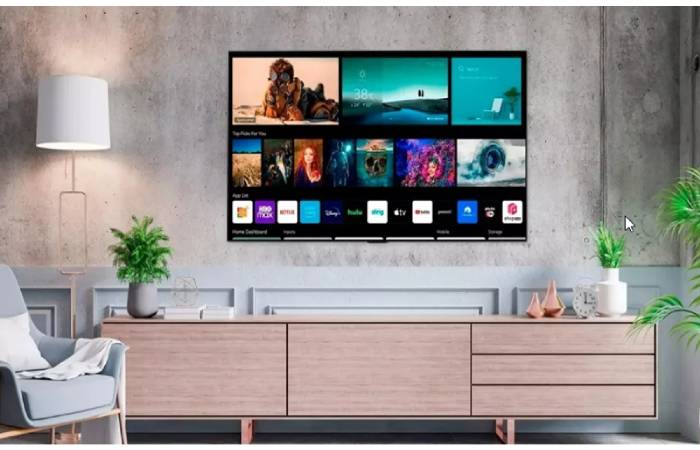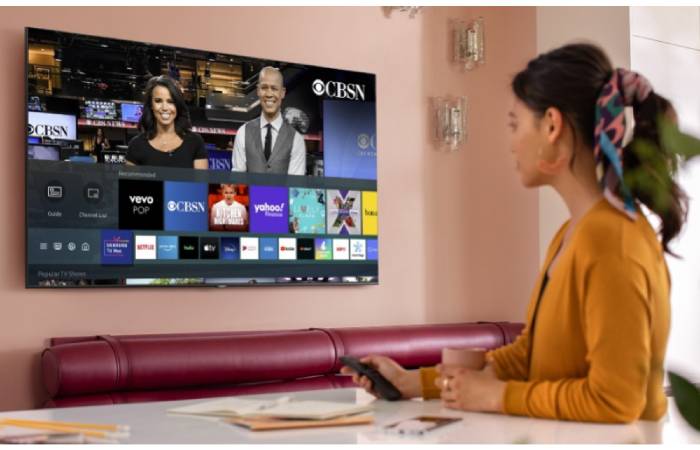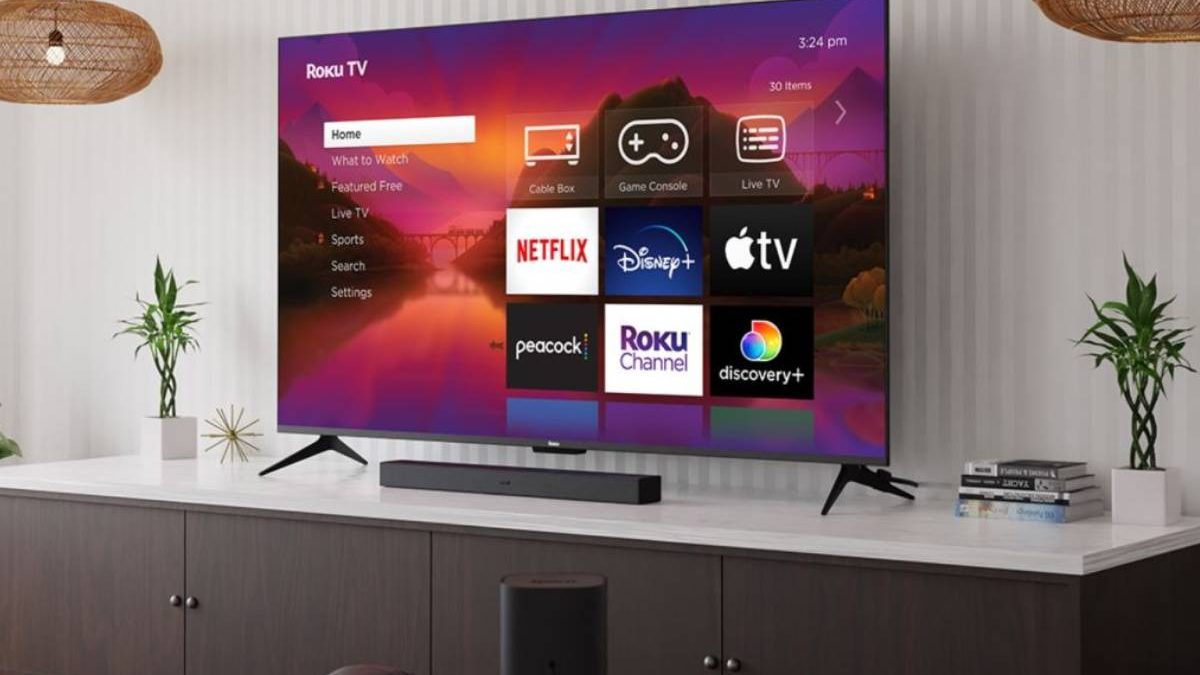In today’s fast-paced digital world, Smart TVs have emerged as the ultimate entertainment hub, blending cutting-edge technology with seamless internet connectivity. These futuristic devices have revolutionized how we consume media, making it easier than ever to access streaming services, browse the web, play games, and connect with many smart devices. In this comprehensive guide, we will explore what Smart TVs are, what factors to consider when choosing one, and some of the best Smart TV brands and operating systems in the market.
Table of Contents
What are Smart TVs?
Smart TVs are television sets integrated with advanced computing technology, allowing them to connect to the internet and access a wide array of interactive content. These TVs come equipped with various applications, streaming services, and online platforms, enabling users to watch their favourite shows, movies, and videos, play games, surf the web, and even control other smart devices within their homes.
Factors to Consider when Choosing a Smart TV
Room Size and Seating Position

One of the essential factors to consider is the room size and seating arrangement. The ideal Smart TV size varies depending on the viewing distance. For a small to medium-sized room, a 40 to 55-inch TV should suffice, while larger rooms may require a 65-inch or even an 80-inch TV for an immersive viewing experience. Additionally, the seating position should be considered, as it impacts the optimal viewing angle and overall comfort.
Connectivity and Ports
Ensure that the Smart TV you choose has sufficient connectivity options and ports to connect external devices such as gaming consoles, soundbars, and streaming devices. HDMI, USB, Ethernet, and Wi-Fi connectivity are essential features to look for in a modern Smart TV.
Operating System (OS) and User Interface (UI)
The operating system plays a crucial role in the functionality and user experience of a Smart TV. Popular Smart TV operating systems include Android TV, Tizen (Samsung), WebOS (LG), Roku TV, and Fire TV (Amazon). A user-friendly interface and regular software updates are desirable traits for a seamless Smart TV experience.
Audio Quality
A fantastic visual experience is complemented by impressive audio quality. Consider built-in speaker configurations, audio enhancements like Dolby Atmos, and the possibility of connecting external sound systems for a theatre-like experience.
LED (Light Emitting Diode) TVs

LED TVs are the most common and widely available display technology in Smart TVs today. They use a backlighting system where an array of LEDs illuminates the pixels on an LCD (Liquid Crystal Display) panel. The pixels control the light’s intensity to create images on the screen. LED TVs offer a good balance between price, picture quality, and energy efficiency. Within the LED category, there are two main types:
- Edge-lit LED: In this design, LEDs are placed around the edges of the TV, and the light is directed toward the centre of the screen. While edge-lit LED TVs are generally thinner and more affordable, they may have some issues with uniformity and contrast, as the light may bleed through, leading to slightly uneven illumination.
- Full-array LED (FALD): This design places the LEDs behind the entire LCD panel, allowing for localized dimming. FALD LED TVs can adjust the backlight brightness in specific areas, providing better contrast and deeper blacks, which enhances overall picture quality.
OLED (Organic Light Emitting Diode) TVs
OLED TVs are known for their exceptional picture quality and are often considered the pinnacle of display technology. Each pixel in an OLED display emits its light, allowing for true black levels because pixels can be turned off individually. This results in infinite contrast and vibrant colors, providing a more immersive and realistic viewing experience. OLED TVs also offer wide viewing angles, meaning the image remains consistent from almost any position in front of the screen. However, OLED TVs tend to be more expensive than LED TVs and may suffer from potential screen burn-in issues, though modern models have improved significantly in this regard.
QLED (Quantum Dot Light Emitting Diode) TVs:
QLED TVs are a variation of LED TVs that use quantum dots to enhance colour performance. Quantum dots are tiny semiconductor particles that can emit very specific colours when illuminated. In QLED TVs, a layer of quantum dots is placed between the LED backlight and the LCD panel, allowing for more accurate and vibrant colours compared to traditional LED TVs. QLED TVs also benefit from improved brightness and better HDR (High Dynamic Range) capabilities, making them a popular choice for those who prioritize colour accuracy and a bright display.
MicroLED TVs
MicroLED is an emerging display technology that holds promise for the future of TVs. It uses microscopic LEDs that emit their light to create images, similar to OLED. However, MicroLED TVs use inorganic materials, which may reduce the risk of burn-in. MicroLED TVs offer outstanding picture quality, including excellent contrast, brightness, and colour reproduction. As of now, MicroLED TVs are generally very expensive and mostly available in larger sizes for commercial applications, but they are expected to become more accessible to consumers in the future.
Each display technology has its advantages and disadvantages, and the choice largely depends on your budget, viewing preferences, and desired features. OLED TVs are ideal for cinephiles and those seeking the best picture quality, while QLED and high-end LED TVs cater to users looking for excellent HDR performance and vibrant colours without the premium price tag of OLED. LED TVs, particularly FALD models, still provide a compelling option for most consumers with a more budget-friendly approach to Smart TV ownership. As technology continues to advance, we can expect more innovations and improvements in display technologies, offering an even better viewing experience for Smart TV enthusiasts.
Best Smart TV Brands and Operating Systems

Samsung (Tizen OS)
Samsung is a prominent name in the Smart TV market, known for its premium build quality and innovative features. Their Tizen OS provides a user-friendly interface, easy navigation, and support for various apps and services.
LG (WebOS)
LG’s Smart TVs powered by WebOS offer a smooth and intuitive user experience. The OS is well-optimized and provides quick access to various streaming services. LG also offers OLED TVs that deliver stunning picture quality.
Sony (Android TV)
Sony’s Android TV lineup combines its picture processing technology with the versatility of Android OS. This OS provides access to the Google Play Store and a vast library of apps and games.
TCL (Roku TV)
TCL has gained popularity for its affordable yet feature-rich Smart TVs, with Roku TV as the operating system. Roku TV offers an extensive selection of streaming apps and a straightforward interface.
Amazon (Fire TV)
Amazon’s Fire TV OS powers a range of Smart TVs from various manufacturers. It boasts smooth performance, a user-friendly layout, and easy integration with Amazon’s ecosystem.
Conclusion
Smart TVs have become an integral part of modern homes, offering various entertainment options and convenient connectivity. When choosing a Smart TV, consider factors like room size, display technology, resolution, connectivity options, operating system, and audio quality. With top brands like Samsung, LG, Sony, TCL, and Amazon, along with their respective operating systems, consumers are spoiled for choice. Embrace the future of entertainment with a Smart TV that fits your needs, and enjoy an immersive multimedia experience from the comfort of your home.

